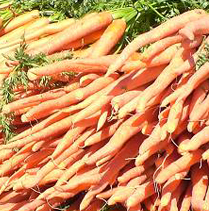
Let’s face it. We have to select amongst a number of choices when deciding what food to buy and where to buy it. Health conscious consumers often view organic food as the healthiest option and who can blame them? Consumers are bombarded in the grocery store with images of picturesque farms, happy cows, and frolicking chickens on packages that give the message that organic foods are the healthiest choice. They are led to believe that these organic farmers have the consumer’s best interests at heart. Not necessarily.
Corporate conglomerates have bought many of the smaller organic food companies that did originally value people’s health. These small farmers were founded on eco-friendly principles, but the big food companies are now mainly interested in getting a slice of the “organic pie.” As consumer interest in organic foods gained and has continued to gain momentum in the United States, organic agriculture and food production has become a lucrative business for food companies who are churning out an ever-widening array of organic food products.
Organic food only makes up a little over 4% of total U.S. food sales in 2012, but it is the fastest growing segment of the market. According to the Organic Trade Association, sales surged to 11.5% and the organic food market grew to $35.1 billion in 2013.
Some organic standards are too loose in the United States, allowing big food companies to establish organic “farms” and feedlots to make some extra money.
Thus, organic farming has now become extremely commercialized. “Big Organic” firms now use the same industrial-size farming and long-distance shipping methods as conventional agribusinesses. When organic foods are purchased at supermarkets, those items must be refrigerated and transported over long distances, consuming as much fossil fuel as conventional foods. Organic has strayed from its eco-friendly roots to become more mainstream.
What should we, as consumers, do if we want to make sure our food is produced in sustainable, environmentally friendly ways while also being good for our health? For food enthusiasts and gourmands, “local” is the new “organic.” “Local” is the new ideal that promises healthier bodies and a healthier planet.
Local foods are those grown within a 100-mile radius (some say even up to 225 miles) on small farms. While not all local foods are certified organic due to the extensive paperwork and fees involved, many local farmers practice sustainable growing techniques and use minimal synthetic fertilizers and chemicals (i.e. pesticides). Visit your local farmers’ market and ask the farmers about their growing practices – you may be pleasantly surprised by their answers. Get your kids excited about the farmer’s market with the Super Crew coloring pages, featuring farmer’s market produce.











